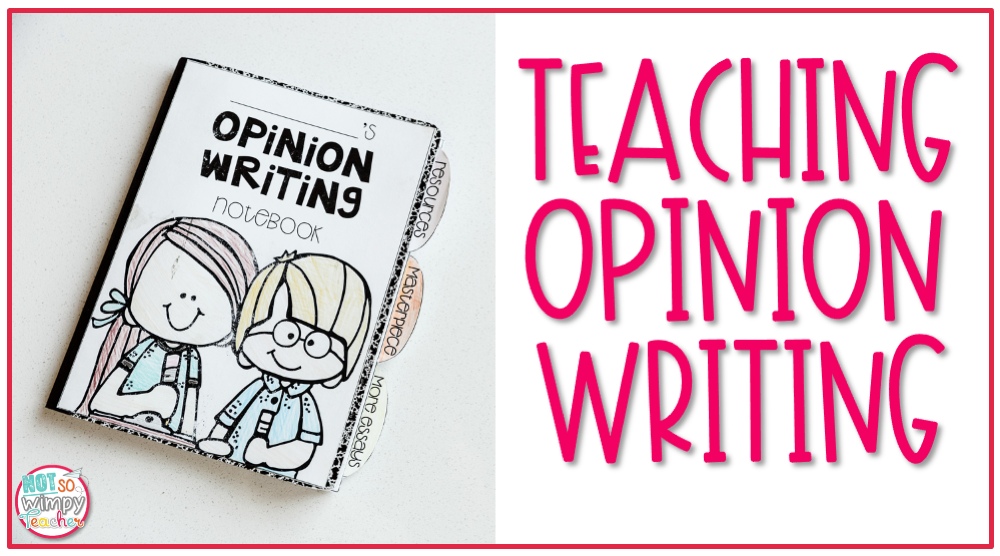
I love teaching opinion writing. And students love it too. Opinion writing is the third writing genre I teach. I recommend teaching writing in units, starting with personal narrative, informational report, opinion writing, and finally, fiction.
This approach allows you to spend eight full weeks practicing one specific type of writing so students can truly master the skills. Today I am sharing 8 Must-Do Tips for teaching opinion writing. For more information about what to teach in each genre, check out my handy writing guide: What to Teach in Writing.
Check out this video about teaching opinion writing:
Keep reading to see our best tips for teaching opinion writing.
1. Start with a pre-assessment
The first must-do tip for teaching opinion writing is to start with a pre-assessment. The pre-assessment allows you to see how much students know so you can tailor your lessons appropriately and it allows you to measure student growth at the end of the unit.
Give students a simple writing prompt and one writing period to respond to it the best they can. Try not to answer too many questions during this writing time. You want to see what students know.
Use a simple rubric to score the sample (but don’t add the grade to the grade book). Then you can use the sample to plan your lessons, formulate conference groups, and use as a baseline. It’s not realistic to expect all your students to master all the opinion writing skills after eight weeks. But when you compare their pre-assessments to their final masterpiece, you will be able to see how much they have grown as writers.
2. Provide examples
At the beginning of your opinion writing unit, you need to spend a day or two teaching WHAT opinion writing is. You can’t expect students to write strong opinions if they don’t know what opinion writing looks like.
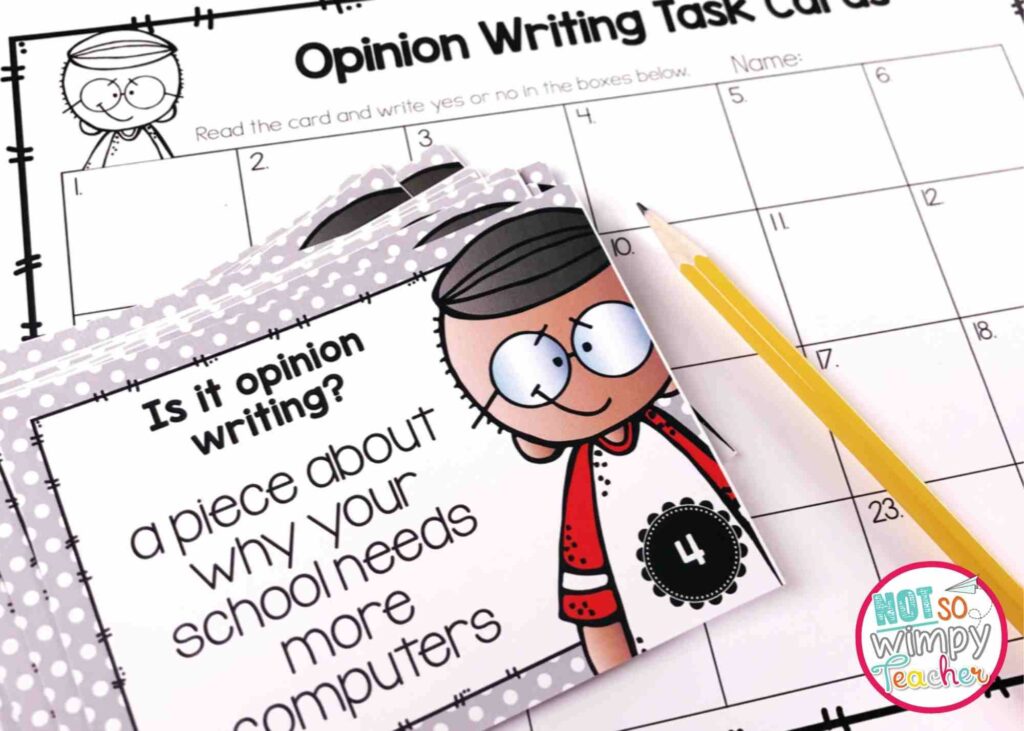
Use lots of mentor text passages (I include them in my writing units) and books. Once you’ve gone over several examples of what opinion writing is, a task card scoot is a great way to check for understanding.
3. Give choice
Allow students to choose their own writing topic. This is the best way to increase their excitement and ownership. No-one wants to be told what to write about. Imagine if someone told you that you had to write an opinion piece on why NASCAR is the best sport and you didn’t know anything about NASCAR. That wouldn’t be a very fun assignment.
Students feel the same way. They are much more invested in a writing project when they can choose what to write about.
But that doesn’t mean choosing a topic will come naturally. Plan to spend 2-3 days of your opinion writing unit teaching strategies for generating topics. Two of my favorite strategies are challenging students to come up with lists of their favorites (things like hobbies, goods, movies, etc.) and things that they want (a kitten, to go camping, to eat ice cream every day).
They can pick a favorite item from one of those lists and turn it into the topic for their opinion essay. They will use their essay to try to convince you that they are right. (Toy Story is the best movie, Why I Should be allowed to eat ice cream every day).

4. Draft early
This might be the most important tip for teaching opinion writing or any type of writing. Let students draft early in the process.
If you try to teach every skill prior to letting students write, they will get bored. Plus, it is impossible to teach them everything they need to know before they start writing.
Instead, let them draft right away. Then each day you can teach a mini lesson on important skills. After you have taught the mini lesson, have students go back to the draft and revise using the new strategies you have just taught.
The key is to keep this process simple. Break mini lessons down into bite-size pieces. Have students practice just one or two strategies a day. And don’t expect perfection.
5. Plan bite-sized lessons
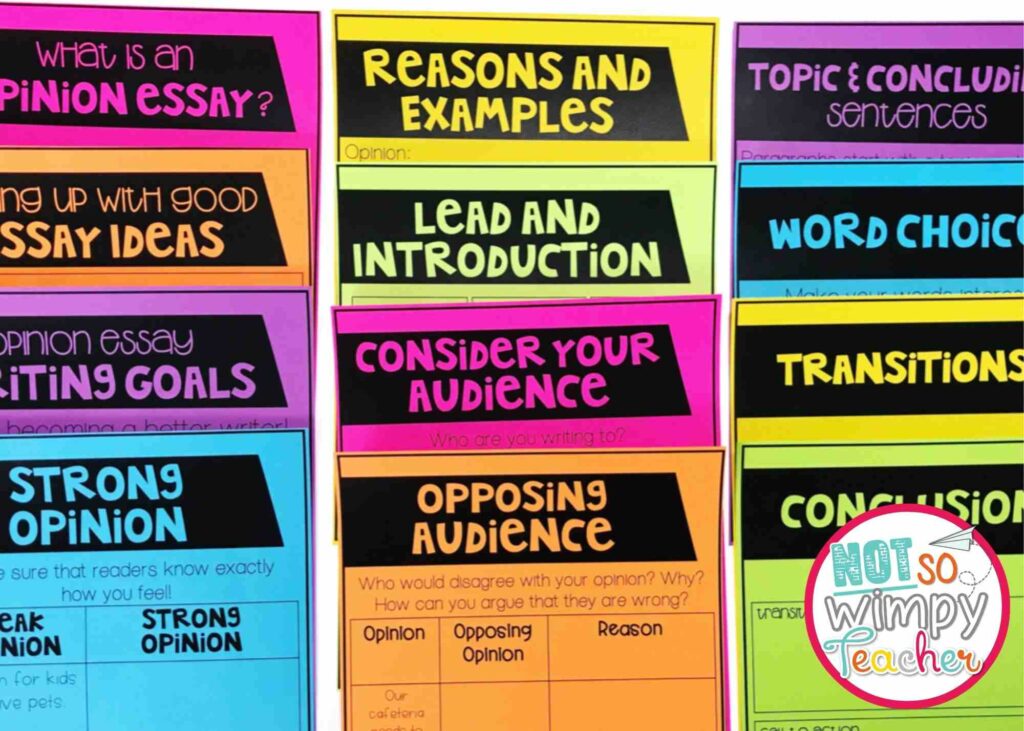
When teaching opinion writing, you will need to teach students to use both reasons and examples to support their opinions. But it is super important to separate these into different lessons.
You will want to teach a lesson or two on using reasons to support opinions. And then another lesson on using examples. When taught together, most students don’t understand the difference between reasons and examples.
Plan to spend more time focused on reasons because they are essential to good opinion writing. Some kids may never understand examples in your grade level, but they can still have a quality piece of writing if they include reasons.
6. Look for the opposing opinion
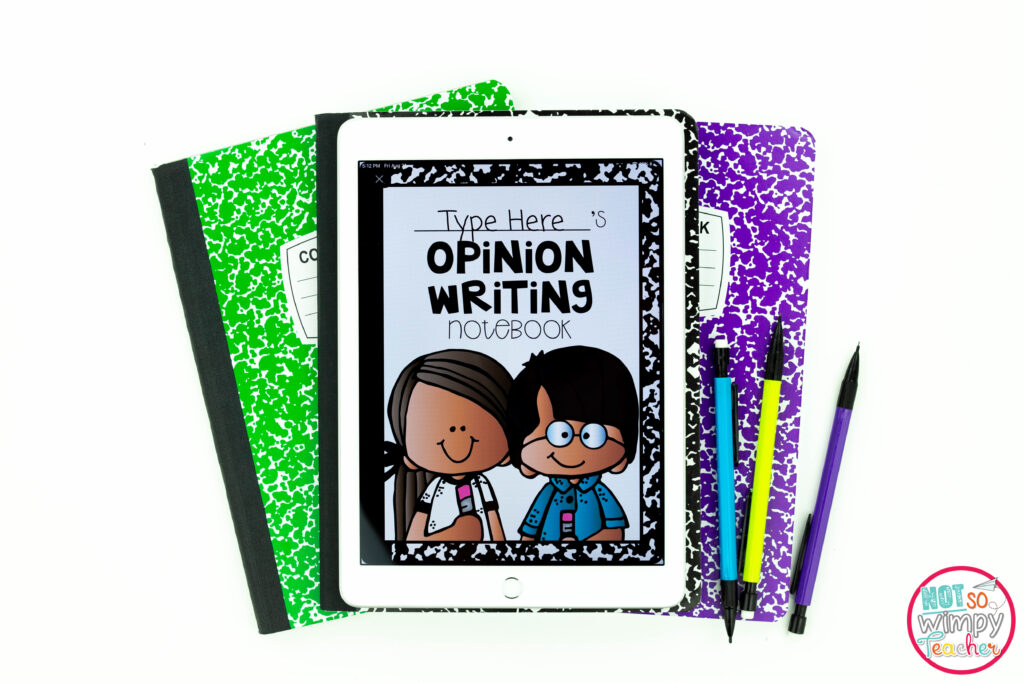
Another important strategy when teaching opinion writing is to help students identify the opposing opinion. When they anticipate objections, they can strengthen their own reasons.
A great way to do this is by asking questions.
- Who won’t agree with you?
- Why?
- What will they say?
- How can you change that opinion?
When students anticipate opposing arguments, they become better at supporting their own opinion.
7. Make time to edit
I believe that writing is process. First, students draft. Then, they revise. And finally, they edit. When teaching opinion writing, let students spend a day editing their essay. Give them resources like word lists, anchor carts, or editing checklists to help. Also, don’t overwhelm them by having them try to correct every mistake. Instead, have them search for specific errors, like commonly misspelled words or missing punctuation, one at a time.
Then, spend another day having a peer edit their writing. Fresh eyes can often pick up a lot more errors. And the peer can also flag if something doesn’t make sense.
Here’s a bonus tip: reading their own essay out loud helps students to discover more of their errors.
After students have done their editing, resist the urge to correct all of the remaining errors. They are kids and their writing is not supposed to be perfect! Seeing a page marked up with pen is discouraging to everyone.
FREE Editing and Revising Centers
Want to make editing even easier? Check out my FREE Editing and Revising Centers!
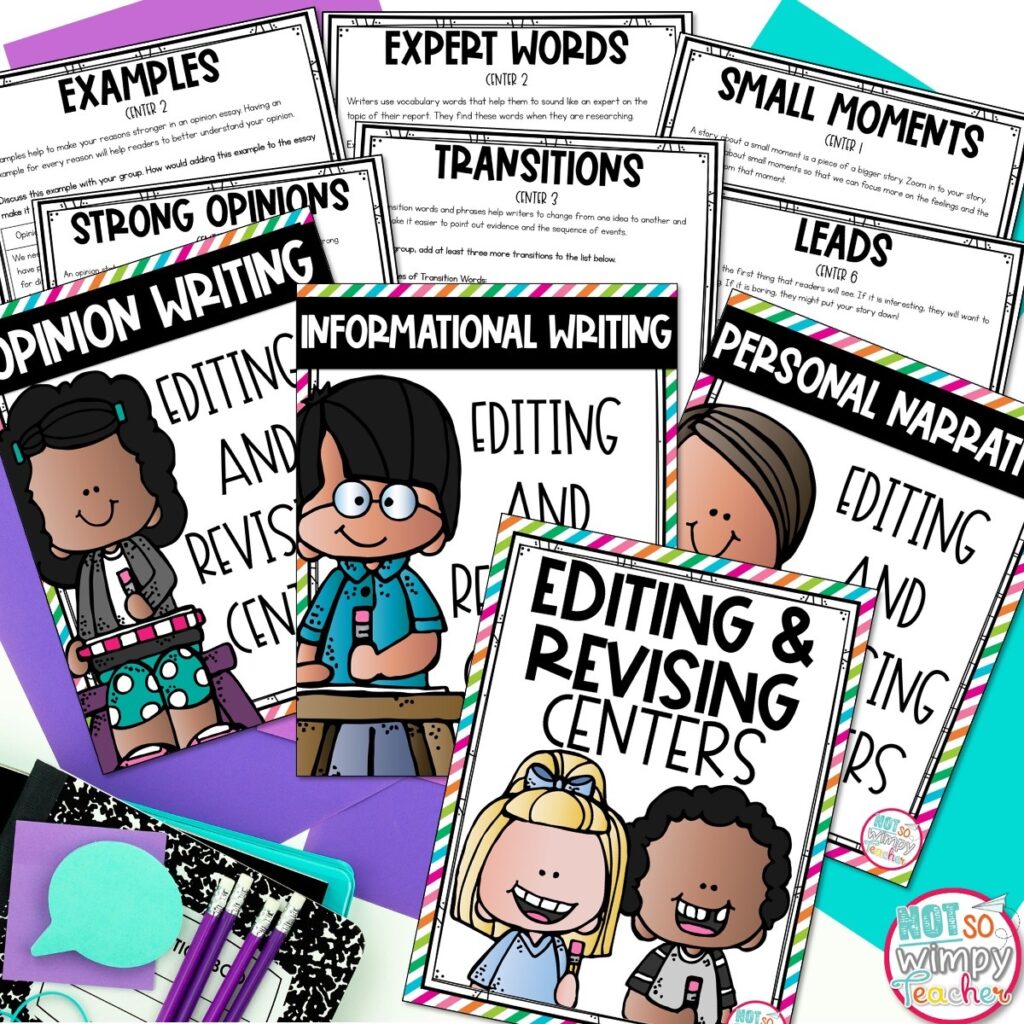
This FREE resource includes centers to help your students master tricky editing and revising skills.
Inside you’ll find:
- 18 hands-on centers, each focused on one specific skill
- Differentiated activities for grades 2-5
- Narrative, opinion, and informational writing tips, examples, and practice activities
- Editing and revising checklists
- Detailed teacher directions and center signs
These centers make a great review activity! Divide your class into groups and let them work together to read the tips, review the examples, practice the skill, and discuss their ideas.
I know you and your students are going to love them!
8. Celebrate student writing
Finally, when you are wrapping up your unit on opinion writing, set aside some time to celebrate.
Find a fun way to publish. Maybe create a class book, “In our humble opinions . . .” or try posting opinion pieces on a class blog. Create an Opinion Page bulletin board and hang up student work.
Try a writing celebration. Have a publishing party and allow students to share with one another. Put them in small groups and let everyone read their writing. Or ask students to share their favorite paragraph. Or try an Opinion Opening Night.
When you make it fun, students look forward to completing their next writing piece.
Opinion Writing Units

My opinion writing units have EVERYTHING you need to make teaching opinion writing easy.
These units are available for grades 2-5 and come with 8 weeks of opinion writing lessons. They include:
- Lesson plans
- Mini lessons
- Anchor charts
- Mentor texts (you don’t have to purchase any additional books or spend hours hunting in the library!
- Task cards
- Writing tasks
- Conference forms
- Rubrics and more
The lesson plans are simple. All you have to do is print and teach.
Students will learn all of the skills necessary for writing persuasive essays with a strong opinion: how to use facts and reasons, how to write topic and concluding sentences, how to structure paragraphs…and so much more!
Finally, these units make writing fun for your students. You may even find that your students beg for more writing time. And when students enjoy writing and get lots of practice, they perform better on standardized tests.
But you don’t have to take my word for it. Look what Kimberly M. had to say:
This is THE BEST way to teach opinion writing! I love that the mentor texts are provided and that they are fun, interesting, and relatable to my students. It is so fun to read the mentor text to my students and ask them what they think the authors’ opinion is, what their thesis statement is, what their reasons and examples are, etc. I love that this unit focuses on each portion of the essay a little bit at a time. I love to teach reasons and examples with color codes, that way students know that their reasons support their opinion and the examples support their reasons! There are so many wonderful tools for teaching and learning in this resource, especially the anchor charts! I like to use them as a guide to create larger anchor charts with my students, but they cover all of the information that I need in the unit! – Kimberly M.
Shop This Post
More Tips for Teaching Writing
Want even more tips on how to teach writing? Then you will love my online professional development course, the Not So Wimpy Writing Masterclass. I specifically developed this online professional development course for teachers in grades 2-5 to help simplify writing workshop and provide the tools and strategies you need to be a more confident writing teacher.
You’ll learn tried and true strategies for how to teach writing, including how to:
- Teach writing in units
- Create manageable mini lessons
- Keep students on task during independent writing time
- Implement a successful writing workshop without chaos and confusion
- Transform ALL your students into eager and excited writers who have the skills needed to perform well on standardized tests
In short, this course is designed to help you become a more confident writing teacher, regardless of what writing curriculum you have (or don’t have).
And the Masterclass is so easy to take. It’s entirely online! You can watch whenever and wherever works best for you. And you get lifetime access to the course, which means you can return to the videos over and over again.
Check out the amazing bonuses!
Not only do you get 38 training videos, a 10-hour professional development certificate, a course workbook, and tons of tried and true strategies that have been used successfully in thousands of classrooms, but you also get these incredible bonuses:
- Compare and Contrast Reading Response Essay Writing Unit – Give your students extra practice with this tricky skill with my easy-to-use lessons.
- Bonus Module: Video Trainings of 3 Genres – See the must-know tips and tricks for teaching the most important skills in personal narrative, informational report, and opinion essay writing.
Ongoing Support – You’ll get immediate access to the exclusive Not So Wimpy Writing Gurus Facebook group where you can ask questions, get ideas and inspiration and interact with the Not So Wimpy team and Masterclass alums (aka other teachers).
Registration for the Not So Wimpy Writing Masterclass is currently closed. Be sure to sign up for the Waitlist so you will be the first to know when we open it again. Sign up now so you don’t miss out!
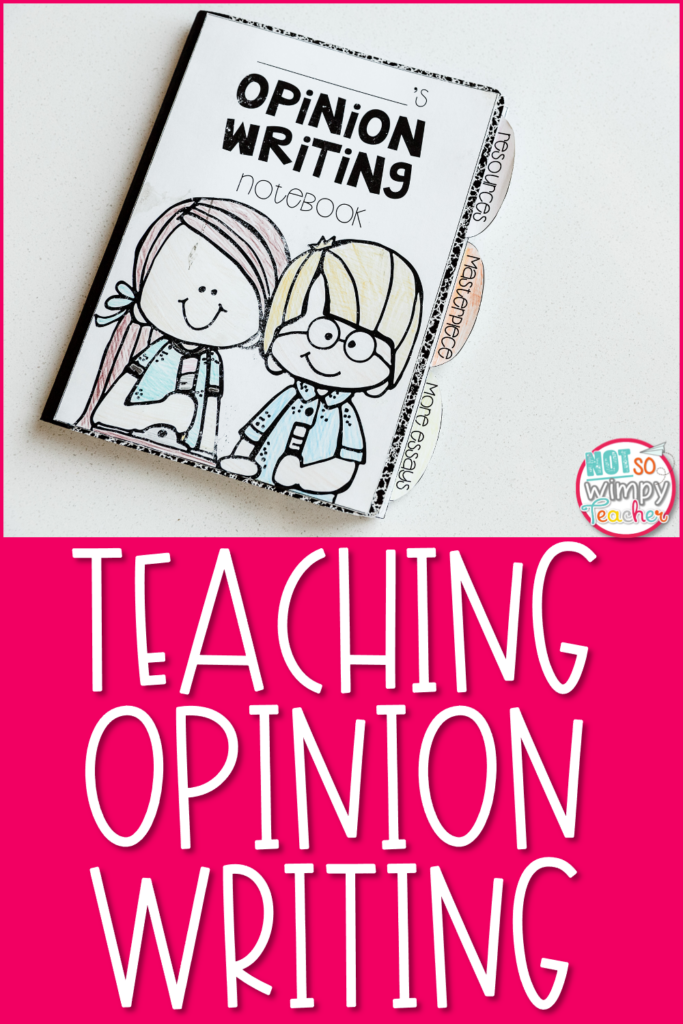
I hope you enjoy these tips for teaching opinion writing. You can also find tips for teaching personal narrative and informational report writing.
Have a Not So Wimpy Day,


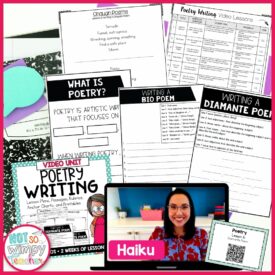




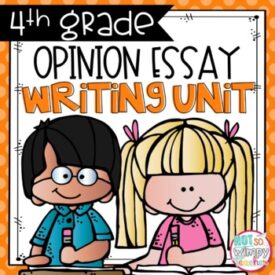
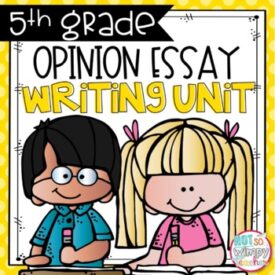

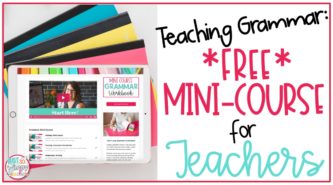

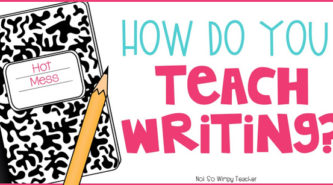











 End of Year Carnival Week for grades 2-5!
End of Year Carnival Week for grades 2-5!
Leave a Comment